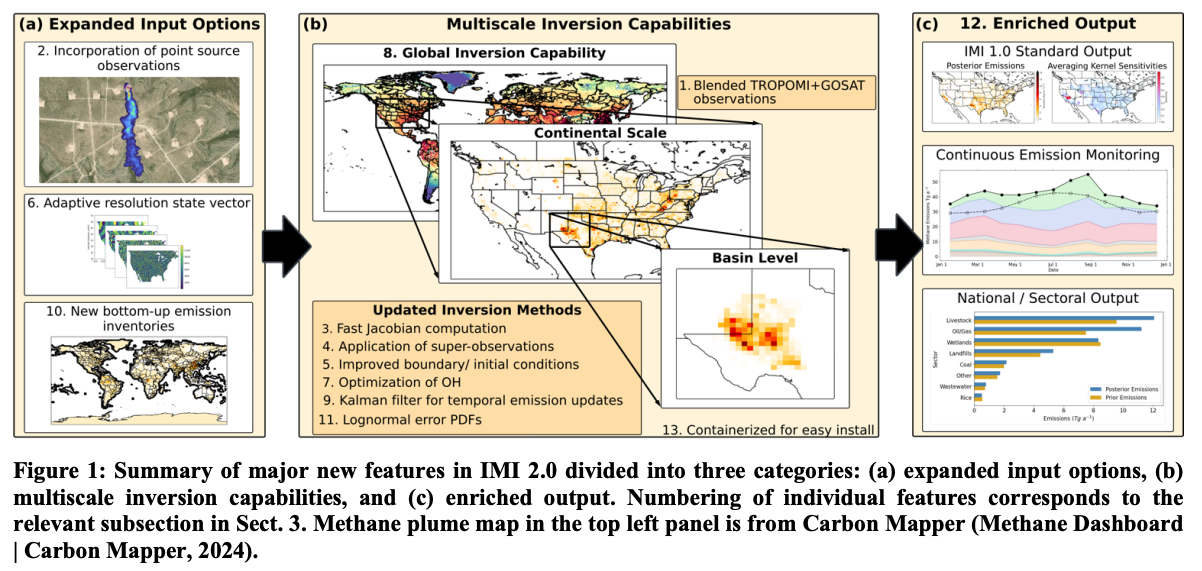Releases
IMI 2.0

IMI 2.0 is now in beta testing with a host of new capabilities, including:
- Improved TROPOMI observations: Users have the option of accessing the most recent operational product from SRON or a blended TROPOMI+GOSAT product constructed using machine learning (Balasus et al., 2023).
- Continuous emission monitoring: IMI 2.0 introduces a Kalman filter feature to regularly quantify emissions from a region of interest with low latency (e.g., weekly, monthly estimates).
- Optimization of methane sinks: Users can optimize methane sinks from oxidation by the hydroxyl radical and uptake by soils.
- Improved computational efficiency: The construction of the Jacobian matrix, a key computational step, has been sped up by an order of magnitude, making the inversion process much faster.
- Improved error characterization: IMI 2.0 has improved characterization of observational errors, allows users to use log-normal errors on emissions, and returns detailed error diagnostics on the results.
- Global inversions: IMI 2.0 supports global methane inversions in addition to regional.
- Incorporation of point source observations: IMI 2.0 uses high-resolution point source observations to construct the state vector of emissions optimized in the inversion, improving the quantification of methane emissions where large point sources have been observed.
- And much more: See the IMI 2.0 development paper by Estrada et al. (2024) for more information.
Previous Releases
Bugfixes
- Removed TROPOMI albedo filters after consultation with SRON.
- Fixed various errors including those in TROPOMI variables, observation array size, and Harvard GEOS Chem environment files.
- Introduced a new default boundary conditions version (v2023-06) with significant updates, including the removal of a misapplied stratospheric correction and albedo filters.
- Added support for specifying partitions for sbatch commands to enhance ease of use on local clusters.
- Enabled nc4 compression, significantly reducing the file size of the output directory generated by the IMI.